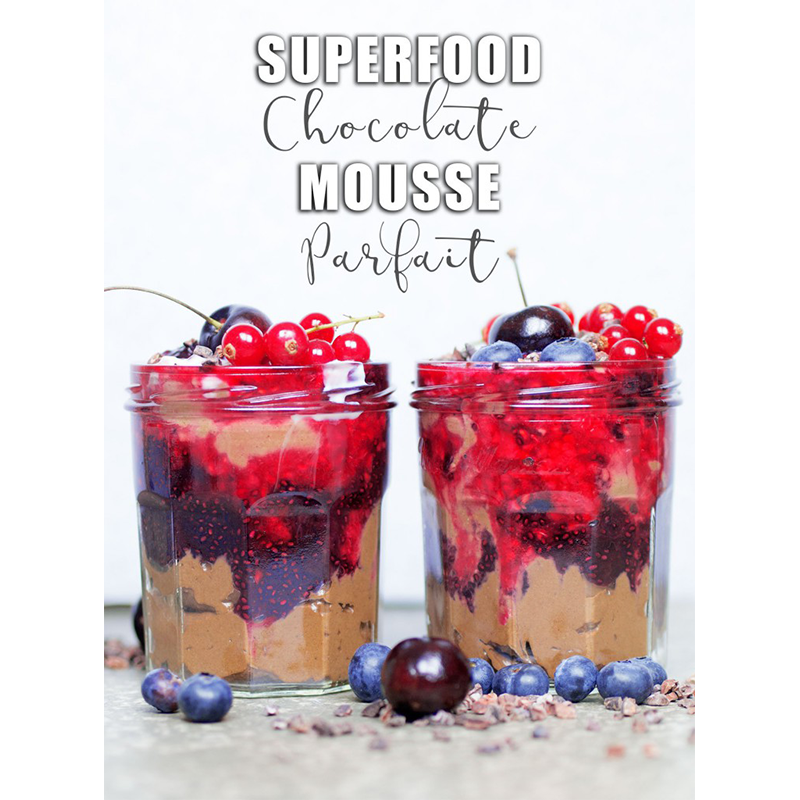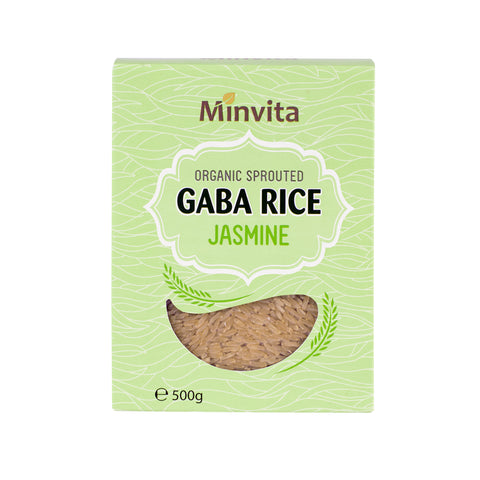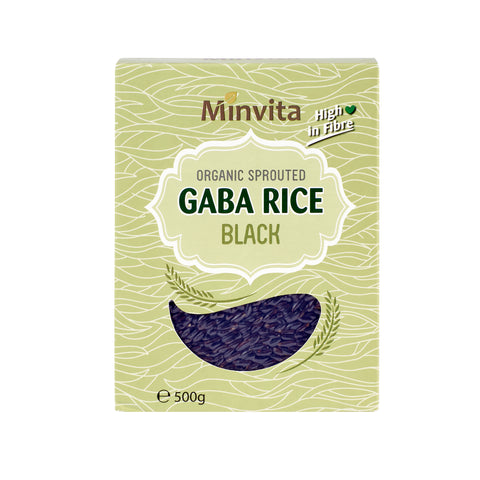Recent Posts
-

- Make it: Superfood... 16.06.2017
-

- You’re invited: #webalance17 16.06.2017
-

- Your full Festive... 16.06.2017
-

- Your Christmas Gift... 16.06.2017
-

- The Festive Balance!... 16.06.2017
All the facts on GABA (and GABA rice)!

The full nutritional lowdown on GABA, and the science of GABA rice…
What is GABA? Summarising the science…
GABA (‘gamma amino butyric acid’) is one of several amino acids present in in our brains that acts as a neurotransmitter – AKA chemical messenger.
There are two main categories of neurotransmitter, those that stimulate (‘excitatory’) and those that calm (‘inhibitory’), with GABA one of the soothing latter.
What effect does GABA have on our body?

Some call it ‘nature’s Valium’ for its ability to balance the mood and settle more stimulated and anxious functions.
As with its fellow inhibitory neurotransmitters, dopamine and serotonin, GABA can become depleted when we’re functioning at too wired a level, which, let’s face it, is more than common among the chronically stressed and anxious.
Some of GABA’s calming effects include…
* Reduced panic, anxiety & stress
* Increased tolerance against future stress
* Reduced inflammation
* Lowered blood pressure
* Immunosuppressive support (possibly helpful for those facing autoimmune conditions, including Crohn’s, rheumatoid arthritis etc.)
*Increased sleep
* Balanced, happy, moods
And there’s a whole lot more to GABA than this, we’ll get on to more of the research finds shortly!

Signs of GABA deficiency are said to range from…
A sense of twitchiness or panic; personal history (and/or family history) of anxiety and/or its related disorders; feeling anxious in the pit of your stomach or throat; clammy hands; a sense of tightness in the body, and difficulty relaxing, among other things.
Remember, deficiencies present differently in different bodies and you should always consult your medical practitioner* regarding any symptoms you’re experiencing!
How to get more GABA…
Google ‘GABA’ and you’ll find a number of supplement options on the market. As big believers in the benefits of whole food, we’d far rather consume our GABA in as natural a state as possible, which is exactly why we introduced our GABA rice. More on rice in a minute, but first let’s talk about how GABA goes from plate to brain to sense of calm.
Even the scientists are grappling with the answer to this one! For a long time it was thought it couldn’t possibly work; that GABA cannot cross our Blood Brain Barrier (‘BBB’ – the membrane filtering molecules from, yes, you guessed it, blood to brain).
Yet the studies suggest otherwise…
* Human subjects placed under a stressful stimulus (crossing a suspended bridge) showed increased relaxation versus a placebo group, with effects demonstrated in less than an hour of GABA administration. The same study suggested a possible link between enhanced immunity during stress (when the immune system would usually see impairment).
* A 2015 study found humans ingesting GABA had enhanced ability to carry out ‘stop-change tasks’.
* GABA from rice sources has also been found to induce ‘antidepressant activity’ in humans.
* Another study suggested GABA induces relaxation as it decreases anxiety (increasing alpha waves and decreasing beta waves).
* Research specifically on ‘brown rice extracts with enhanced levels of GABA’ demonstrated benefits beyond mental health, suggesting an ‘inhibitory action on leukaemia cell proliferation’, while increasing cancer cell death.

So, how do the scientists think this could all be happening?
GABA and GABA receptors aren’t just found in our brains, yet in our guts as part of our enteric nervous systems (ENS). This is essentially the ‘gut brain’ you’ve been reading about in every health magazine and book over the past few years!
The most logical conclusion researchers are drawing is that these sedative effects are executed within the ENS itself, creating a ‘beneficial shift in our intestinal microbiota’ and sending a biochemical message zooming up through the gut-brain axis motorway and right into the brain in your head.
EXCITING NEWS UPDATE 22/7/16! The scientists are getting closer. For the first time, researchers have observed gut bacteria eating GABA.
Well, that’s GABA school completed, how about GABA rice?
We may be rocking GABA rice ahead of most of the UK, but we can’t take all the credit for our find. The Japanese and Koreans have been enjoying GABA rice for many years, alongside other germinated brown rice (‘GBR’) products.
That’s just it, GABA rice is a germinated rice and it’s the germinating – and more specifically, sprouting – process that enhances the nutrient content to great effect.
Japanese studies found germinated brown rice not only to be richer in GABA, but also dietary fibre, magnesium, potassium, zinc, vitamins E, B1, B6, and more!
Zinc, B1 and B6 all happen to be major precursors to the natural production of GABA in your brain, so it’s more great news for GABA rice and your stress levels!
Furthermore, the Japanese studies concluded ‘intake of GABA for 8 consecutive weeks suppressed blood pressure and improved sleeplessness’, while stating ‘continuous intake of GBR is good for accelerating metabolism of the brain, preventing headaches, relieving constipation, preventing cancer of the colon, regulating blood sugar level, preventing heart disease, and lowering blood pressure, as well as preventing Alzheimer’s disease’.
Rather exciting, isn’t it? And the research studies were so interesting and extensive, the data was presented by, the Tottori University of Japan’s Professor International Food Economist, Ito Shoichi, at the 2004 Rice Conference in Rome!
The Asian markets even sell rice cookers with GABA rice settings!
Excited to get some GABA on your plate?

We’ve made it easy for you! Here at Minvita we stock 3 GABA rice varieties; each of which is Organic & GMO-free:
1. Organic Sprouted Gaba Rice Black: made from the delicious whole grain homnin rice.
2. Organic Sprouted Gaba Rice Jasmine: from top quality Thai jasmine wholegrain rice.
3. Organic Sprouted Gaba Rice Jasmine (Green Tea): from the same beautiful Thai jasmine wholegrain rice, which is naturally germinated using green tea prior to milling.
Each rice is germinated for a whole 24-hours before being parboiled, ensuring the rice that reaches your kitchen houses as many vitamins, nutrients and amino acids as possible.
We’ve found foodies absolutely love cooking with it – it’s got that bit more ‘bite’ (less mush!) than traditional rice, while retaining all the versatility.
Here are a few GABA rice recipes to get you started.
And to really boost your intake…
* Top up on glutamate-rich foods, another major precursor to your natural GABA production. Such foods include: spinach, mushrooms, tomatoes, corn, lentils, cabbage, parsley, broccoli.
*Those with signs of severe anxiety may also want to restrict their caffeine intake (a stimulant that can also zap your GABA levels). Pick the Black or Jasmine rice blends and switch caffeine drinks to our caffeine-free Rooibos Matcha.
We’d love to see your GABA rice recipes in action. Give us a tag on Twitter, Instagram, Facebook and Pinterest…you may even get a feature shout-out in our monthly Minvita mail!
Minvita GABA rice: £5.99 for 500g.
Fancy a Minvita freebie meanwhile? Grab yourself some Moringa.
*PLEASE NOTE: the information provided should never replace the expertise of your medical practitioner!
Research sources:
Nemeroff, C. (2002) Neuropsychopharmacology: The fifth generation of progress: An official publication of the American college of Neuropsychopharmacology. Edited by K. L. L. Davis, Dennis Charney, and Joseph T. Coyle. 5th edn. Philadelphia, PA: Lippincott Williams and Wilkins.
Neurogistics (2015) What are neurotransmitters? Available at: https://www.neurogistics.com/TheScience/WhatareNeurotransmi09CE.asp (Accessed: 4 April 2016).
Abdou, A., Higashiguchi, S., Horie, K., Kim, M., Hatta, H. and Yokogoshi, H. (2006) ‘Relaxation and immunity enhancement effects of gamma-aminobutyric acid (GABA) administration in humans’,BioFactors (Oxford, England)., 26(3), pp. 201–8.
Prud’homme, G., Glinka, Y. and Wang, Q. (2013) GABA exerts anti-inflammatory and immunosuppressive effects (P5175) — Prud’homme et al. 190 (1001): 68.15 — the journal of immunology.
Boonstra, E., de Kleijn, R., Colzato, L.S., Alkemade, A., Forstmann, B.U. and Nieuwenhuis, S. (2015)
‘Neurotransmitters as food supplements: The effects of GABA on brain and behavior’.
Abdou, A., Higashiguchi, S., Horie, K., Kim, M., Hatta, H. and Yokogoshi, H. (2006) ‘Relaxation and immunity enhancement effects of gamma-aminobutyric acid (GABA) administration in humans’,BioFactors (Oxford, England)., 26(3), pp. 201–8
P, P. (2011) Low GABA levels, GABA and anxiety, GABA and sleep, GABA and mood, GABA and depression.
Oh, C. and Oh, S. (2004) ‘Effects of germinated brown rice extracts with enhanced levels of GABA on cancer cell proliferation and apoptosis’, Journal of medicinal food., 7(1), pp. 19–23.
GABA supplementation improves planning for actions, study shows (2016) Available at:https://www.sciencedaily.com/releases/2015/08/150818090252.htm (Accessed: 4 April 2016).
GBR and RB (no date) Available at: http://www.hatsuga.com/DOMER/english/en/GBRRB.html (Accessed: 4 April 2016) / (No Date) Available at: http://www.fao.org/rice2004/en/pdf/ito.pdf (Accessed: 4 April 2016).
FAO RICE CONFERENCE Rome, Italy, 12-13 February 2004 MARKETING OF VALUE-ADDED RICE PRODUCTS IN JAPAN: GERMINATED BROWN RICE AND RICE BREAD By: Ito Shoichi Professor International Food Economist Tottori University Japan
Patil, S.B. and Khan, M.K. (2011) ‘Germinated brown rice as a value added rice product: A review’, 48(6).
Hands on with Zojirushi’s smartest rice cooker (2013) Available at: http://www.forbes.com/sites/jordanshapiro/2013/04/07/hands-on-with-zojirushis-smartest-rice-cooker/#42c9ef8e1486 (Accessed: 4 April 2016).
GABA deficiency (2002) Available at: http://www.nutritional-healing.com.au/content/articles-content.php?heading=GABA%20deficiency (Accessed: 4 April 2016).








